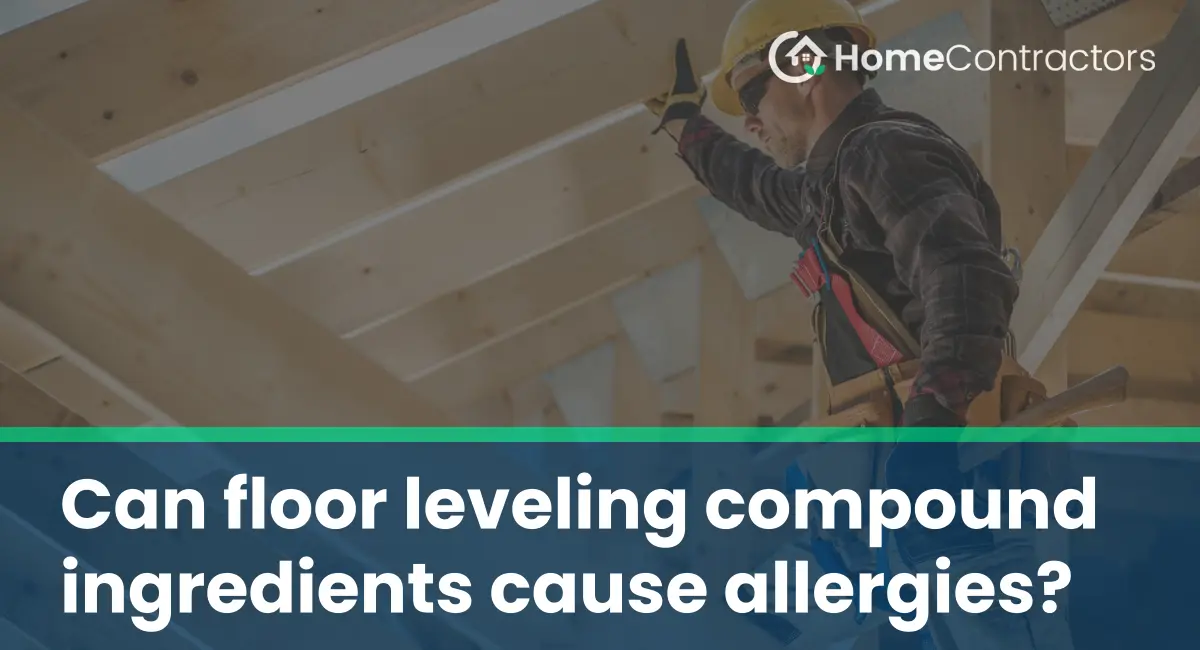Floor leveling compounds are commonly used in construction and renovation projects to create a smooth and even surface before installing new flooring. These compounds are typically made from a combination of different ingredients, and it is essential to understand the potential risks they may pose, including allergies. In this article, we will explore whether floor leveling compound ingredients can cause allergies and how to minimize any potential risks.
Understanding Floor Leveling Compound Ingredients
Floor leveling compounds are made up of various ingredients that work together to achieve a level and stable surface. The primary components typically include cement, calcium sulfate, polymers, and various additives. The specific composition may vary depending on the brand and type of compound used.
Potential Allergens in Floor Leveling Compounds
While floor leveling compounds are generally considered safe to use, some individuals may develop allergies or sensitivities to certain ingredients present in these compounds. The following are potential allergens that could cause adverse reactions:
1. Cement
Cement is one of the main ingredients in most floor leveling compounds. It is made from a mixture of limestone, clay, shells, and silica. Cement can sometimes cause irritant contact dermatitis, which is a type of skin inflammation due to direct contact with the substance. This reaction is more common in individuals with sensitive skin or prolonged exposure to wet cement.
2. Polymers
Polymers, such as latex or acrylic, are often added to floor leveling compounds for improved flexibility, adhesive properties, and resistance to cracking. While latex allergies are relatively common, the likelihood of developing an allergy from exposure to latex polymers in floor leveling compounds is relatively low. However, individuals with known latex allergies should exercise caution and consult with healthcare professionals.
3. Additives and Chemicals
Floor leveling compounds may contain various additives and chemicals to enhance their performance. These additives can include accelerators, retarders, plasticizers, and colorants. Although rare, individuals with specific sensitivities or allergies to these additives may experience adverse reactions.
Managing Risks and Minimizing Allergies
While the risk of developing allergies from floor leveling compound ingredients is generally low, it is important to take precautions to minimize any potential risks. Here are some steps to consider:
1. Read Product Labels and Material Safety Data Sheets
Before using any floor leveling compound, carefully read the product labels and material safety data sheets (MSDS). These documents provide valuable information about the ingredients, potential hazards, and safety precautions. Look for any warnings or information related to allergies or sensitivities.
2. Conduct a Patch Test
If you have a history of allergies or sensitivities to certain substances, it is recommended to apply a small patch of the floor leveling compound on a inconspicuous area and monitor any reactions over a period of time. This will help determine if you have any adverse reaction to the specific product.
3. Wear Protective Gear
When working with floor leveling compounds, it is advisable to wear protective gear such as gloves, safety goggles, and a dust mask. This will reduce the chances of direct contact with the compound and minimize any potential respiratory issues caused by inhaling dust particles.
4. Ensure Proper Ventilation
Proper ventilation is crucial when working with floor leveling compounds. Open windows and use fans or air filtration systems to maintain a constant flow of fresh air in the area. This will help reduce the concentration of airborne particles and minimize the risk of respiratory allergies.
Floor leveling compound ingredients are generally safe to use, but there is a slight potential for allergies or sensitivities in certain individuals. The key is to be aware of the ingredients present in the compound and take necessary precautions to minimize any risks. By carefully reading product labels, conducting patch tests, wearing protective gear, and ensuring proper ventilation, you can significantly reduce the chances of experiencing adverse reactions. Always consult with healthcare professionals if you have any concerns about allergies or sensitivities before using any product.
